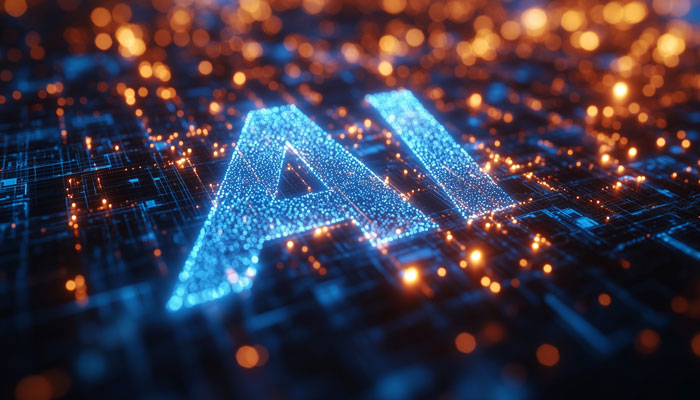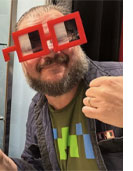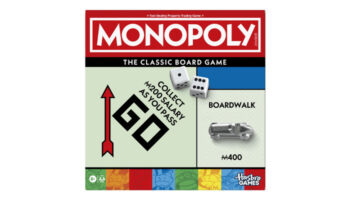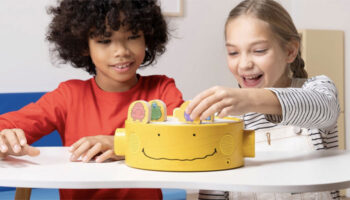As companies make decisions around the use of AI in their internal product development processes, is the role of external inventors more valuable than ever?

“If a company wants products with soul, story and a little magic, they’re still going to need us weirdos!”: Industry figures discuss the impact AI may have on the value of engaging with inventors.
 Danny Kishon,
Danny Kishon,
MD, All in 1 Products
There are really two different questions here. Will the role of inventors be more valuable than ever? And will toy companies feel like the role of inventors is still more valuable than ever?
The answer to the first question is a firm “yes”. As anyone using AI will tell you, it takes existing knowledge and skill to sort the wheat from the chaff and get good stuff out of AI. Neither it, nor we, understand what it’s doing, so user ingenuity and expertise is key.
The answer to the second is more complex. There will be companies who will see integrating AI into existing toys as the low hanging fruit and will look to different areas of expertise than inventors for this. The slots for inventor concepts could initially become less of a priority in some company’s eyes.
However, once AI does come in, it will be the inventors who find exciting and innovative ways to use it and that, once again, will be seen as more valuable than ever.
In the very short-term, though, the changes will be mostly administrative I suspect. But it may not be too far down the road that the Mojo Nation events will be virtual only, with AI avatars screening, filming and instantly evaluating product… All without ever having visited a cocktail bar, sweated their way through an awards evening or enjoyed the pleasure of being part of a creative community with an affection for late night bars and staying a child at heart.
 Amanda Birkinshaw, Richard Heayes & Scott Dean,
Amanda Birkinshaw, Richard Heayes & Scott Dean,
7Pips
If you work in the creative industries, chances are someone has already brought up AI and the impact it could have on your work. Like most new technologies, AI is quickly embraced by creatives – we thrive in innovation hotspots and are naturally drawn to the allure of the new.
In the world of physical products, the challenge over the past two decades has always been moving beyond glossy product renderings to delivering real, tangible outcomes. AI makes that challenge even greater. It’s now easier than ever to produce something that looks finished but is, in truth, only 5% complete. We’ve seen this time and again with Kickstarter campaigns – products that look ready for market but are far from it.
Professional inventors don’t just offer fresh ideas – they bring a roadmap to make them real. They test models, refine mechanics, and solve for what’s actually FUN, feasible to produce, safe and commercially viable. As AI-generated concepts proliferate, the hard graft of real design will still be essential to bring those ideas to life.
Let’s just hope the C-suites in the toy industry remember that – especially as the CMO whips up the next doll line over their lunch break.
 Matt Nuccio,
Matt Nuccio,
President, Design Edge
AI is like having a super intern that never sleeps, knows every Buzzfeed list ever written, and can write a product description in the time it takes me to find my reading glasses. That’s absolutely amazing… But let’s not pretend AI is turning everyone into Willy Wonka. If anything, it’s more like Willy Wikipedia; all facts, no fun.
Big companies are understandably excited about AI. They see it as a way to move faster, brainstorm bigger and maybe even reduce risk. But here’s the twist… Creativity doesn’t follow the rules. It thrives on randomness, cultural nuance and straight-up weirdness. And that’s where external inventors come in.
Inventors live outside the algorithm. We think in spaghetti logic. We mix Batman with baking sets and somehow pitch it with a straight face. You’re not going to get that easily from ChatGPT. You need to be slightly demented enough to come up with some very questionable prompts!
To put it in movie terms, AI is like Jarvis from Iron Man – wickedly smart and incredibly helpful, but it’s Tony Stark, the guy, who builds the suit and flies it into the action. Or to get more nostalgic, AI is Short Circuit’s Johnny Five reading every book in the library at warp speed. But he still needs input. The real-world kind… And that’s us.
If anything, as AI fills the creative pipeline with more “safe” data-driven concepts, the truly offbeat, emotional, out-of-left-field ideas – the kind inventors obsess over – will shine even brighter.
So yeah, bring on the bots. Let them handle the boring stuff. But if a company wants products with soul, story and a little magic, they’re still going to need us weirdos with glue guns, 3AM sketches and a suspicious amount of Play-Doh in our pockets.
 Scott Brady,
Scott Brady,
Game Designer
I’m afraid that external innovation will be devalued as more and more companies turn to AI internally. It will be up to those independent inventors to step up their game to continue to compete, but in the long run it may be a losing battle. AI will continue to get better and may eventually replace all forms of creation and innovation. There is already news of AI creating never-before-seen nanomaterials as strong as carbon steel and as light as Styrofoam. Considering how fast it has already progressed, it’s almost impossible to imagine where it will be in a few years’ time.
 Rich Mazel,
Rich Mazel,
Chief Creative Officer, All4Fun Toys
AI is one of the biggest revolutions I have seen since the widespread growth of the internet and e-commerce in the 1990s. It will impact most all aspects of life (mostly for the better) and embracing the various tools is vitally important to the toy and game industry.
A couple of caveats… I have seen many pitches of AI smart dolls and characters, and so far they’ve been too expensive, relying on large language models which are problematic when dealing with children and COPA compliance. We had an executive who was very talented at getting AI models to “go rogue” and say inappropriate things. I think there would be a place for a toy that uses a closed and vetted onboard language dictionary. Kids don’t need a toy to have all the knowledge in the universe, they just need a fun and compelling experience.
I would also warn that the legalities of using generative AI for commercial purposes is still to be sorted out. Much like the music industry has software to identify when a song infringes on another person’s IP, this same is happening – and will continue to happen – with Generative IP and IP holders.
Also, for inventors, it’s quite normal now to see pitch presentations with AI generated visuals and copy. It’s probably best to flag that it was AI generated so that the company knows, but it’s quite an acceptable practice.
 Klim Kozinevich,
Klim Kozinevich,
Owner & Creative Director, Bigshot Toyworks
AI is a tremendous toolbox that will enable teams of one or two people to rapidly test and run multiple products to see what works. Even now when I work with AI tools, I get asked if I want tech packs for embroidery or turnarounds and packaging… While this is potentially great, it will be very lonely for creators.
It will also dilute output because while we all use ChatGPT and Midjourney, most of us don’t have thousands of dollars a month for an enterprise model that’s private. Everything you write as a prompt is public and trains the models to be better… It also removes any ownership , rights or confidentiality – so that is a bit of a no no that needs to be addressed.
AI doesn’t innovate. It takes a lot of the creative thinking and imagination out of the process by dumping a pile of art on you and asking you to click what works for your idea. This can also be a problem for people that have no focus and tend to go on side quests all day – be prepared for a million unfinished one dollar ideas.
The bigger industry question is: When did we stop caring about the kids we are creating for and decided to let an algorithm make up some visual word salad of an idea and hope it sticks? If this is the future of toy design then we deserve all the Skibbidi toilets and endless landfill with no long-term worth to kids or playful adults.
What comes next after every Turtle, He-Man and Darth Vader has been done again and again by eight different companies? What will be nostalgia for our kids to pass on to theirs? AI is a tool and not the answer to fun, nurturing and collaborative play. This is why LEGO is winning and we’ve not had a Cabbage Patch Kid moment in decades.
 Matt Fantastic,
Matt Fantastic,
Creative Director, Forever Stoked
At the end of the day, tools are tools*, so the real question is in the details of how these tools are being used, by who, and to what end?
It’s historically been the case that when corporate suits are looking into productivity technology it’s typically not with an eye towards how to help creatives do their jobs and be more creative, but rather how to cut costs and hire less. So, personally, I think the use of AI, especially generative AI, is not a good thing for us creatives or the industry as a whole (at least in the longer term).
There are some use cases that are alright, like replacing Clip Art or random Google image search placeholders in quick and dirty prototypes or using Adobe tools to add a few mm of unexpected bleed to a print file. But using GenAI to replace creative labour is, at best, going to result in a lot of generic garbage and offer very little in the way of actual creativity and innovation.
It’s very unlikely that we’ll be getting the best-case scenario here. People are creative, LLMs regurgitating an algorithmic blend of the data it’s scraped are not. By definition, stuff like ChatGPT and Midjourney are limited to the data they are trained on and thus have no ability to do anything outside of existing work and ideas.
And while I’m not worried that GenAI is going to effectively replace creative labour – especially us freelancers – I do worry quite a bit that the corporate world’s insatiable hunger for quarterly profits means the suits will settle for much worse work if it’s cheaper enough. Then we’ll find ourselves in a rough situation.
*This is setting aside the VERY important questions of training data and environmental impact, but to get at the heart of this question, let’s assume there are/will be ethical models out there – even if the majority of what’s out there now is varying degrees of ‘not great’ to ‘total trash’ in these regards.
 Westley Ciaramella,
Westley Ciaramella,
Partner, Catapult Concepts
Ai is a powerful tool that will be the future of product design. As an inventor, I use it for graphics and voiceovers in videos. AI still needs input to render, so until generative AI becomes active, I still only see it as a way to expedite production. Original creative conceptualisation will still be needed by inventors.
 Alvaro Gonzalez,
Alvaro Gonzalez,
Game Designer & Toy Inventor, Rebel Play Studio
As an inventor and designer working at the intersection of intuition, insight and iteration, I find partnerships like the recent one between Mattel and OpenAI both inevitable and electrifying.
We’ve been here already. Independent inventors have been using AI tools in the trenches for years, not to replace creativity, but to provoke it. We pitched ideas built on AI long before it was fashionable. Not because we wanted faster renderings, but because we understood that true innovation starts with human empathy, not machine output.
AI, when used with intent, becomes a kind of co-conspirator. It’s the intern that never sleeps, the mirror that reflects your thoughts in strange new forms, the compass pointing toward the unknown… But as companies start folding AI into their internal pipelines, the risk is they’ll try to close the loop – to believe that with enough prompts and processing power, they can automate invention itself.
That’s the trap of what I call the ‘ConformAIng era’. AI today excels at remixing the known. It’s not a forge for originality; it’s a library of echoes. Prompting, at this stage, feels more like negotiating with chaos than sculpting with clay.
Picasso once said: “I do not seek, I find.” My father, a lifelong artist, built on that: “There are those who search and then find, and those who find and then search”. I’m firmly in the second camp. I begin with a vision and fight to bring it into being. That’s not how AI thinks. Visionaries wrestle. Curators thrive. Where do you stand?
After years working with generative AI, a few truths remain… AI conforms, it doesn’t originate. Bad prompt equals bad output. And know what you want – it’s lazy; first results are rarely worth keeping. Also, it flatters like a mother. Don’t trust the compliments!
But none of this means AI isn’t valuable. It means it needs a human with mischief in their blood and a map in their mind. External innovators are more vital than ever, not in spite of AI, but because of it. We’re the ones who live in the mess.
 Steve Reece,
Steve Reece,
MD, Kids Brand Insight
AI is evolving into a vital tool for creative people. Currently I see these platforms as an additional element and as something which will has full potential to make human creatives far more prolific.
Longer term, there is no doubt that AI is going to, in effect, end job roles across the board. AI is capable of fairly derivative creativity, as well as some really whacky out there pure creativity, but it looks like LLMs will think in their own particular way… They think in some ways better than humans – try asking ChatGPT to ideate a board game mechanic and it will already do a very good job of that on a conceptual basis. Albeit you will still need gameplay testing to ‘human proof’ the idea and the mechanism.
But think of some of the quirkiest products we have seen from human creatives. I don’t think the need for that type of creative output will ever be taken away from humans by AI. LLMS can understand language and human communication, but they can’t understand what it’s like to feel, or to laugh, or to be human, so they will always be missing something.
–
To stay in the loop with the latest news, interviews and features from the world of toy and game design, sign up to our weekly newsletter here

























